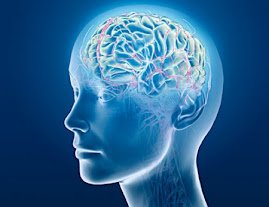Mental exercises with neurofeedback may ease symptoms of attention-deficit disorder, epilepsy and depression--and even boost cognition in healthy brainsBy Ulrich Kraft
At first the computer game looks awfully easy for an eight-year-old--like something out of the Stone Age of arcades in the 1980s. A red triangle "arrow" appears on the monitor's blue screen, and then the nose of a cartoon airplane glides into view from the left. If the arrow points upward, Ben must make the plane climb. When he succeeds, a spiky yellow sun beams.
A second glance shows that all is not as it seems. For one thing, Ben has no joystick. Instead several electrodes glued to the boy's face and to the skin under his hair let him pilot the plane by thought alone.
Such "mind reading" offers many possible applications. It has, for instance, enabled "locked-in" patients--who cannot speak or gesture--to communicate with caregivers [see "Thinking Out Loud," by Nicola Neumann and Niels Birbaumer; Scientific American Mind, Premier Issue, Vol. 14, No. 5, 2004]. By controlling their brain waves, the patients manipulate letters and words on a computer screen. Practice with neurofeedback may also benefit those who suffer from epilepsy, attention deficits, depression and other debilitating mental disorders. The experimental therapy, also called EEG biofeedback, may even help rev up healthy brains, improving cognitive performance.
From Bio to NeuroThe technique is a high-tech twist on biofeedback--a method long used to treat stress-related disorders. In biofeedback, people see or hear physiological measurements that can indicate stress, such as increases in blood pressure, heart rate or muscle tension. Receiving such information from monitoring devices makes normally undetectable body functions accessible for conscious regulation. A person can realize from listening to his racing pulse, for example, that he is under strain and then learn to bring his heart rate down purposely.
--------------------------------------------------------------------------------
There is no magic formula for learning how to harness one's brain waves. --------------------------------------------------------------------------------
The first clues that brain waves could be altered intentionally came nearly four decades ago. In the late 1960s sleep researcher M. Barry Sterman learned something interesting while tracking the EEGs of cats. He found a previously unknown pattern of brain waves with frequencies between 12 and 15 hertz (Hz), or cycles per second, in a part of the brain called the sensorimotor cortex. Sterman, now professor emeritus at the University of California, Los Angeles, dubbed this pattern the sensorimotor rhythm, or SMR. SMR was always present, he learned, in relaxed and awake felines. When he rewarded the animals at those moments with snacks, they began to produce stronger SMRs. Through this conditioning experiment, Sterman demonstrated that it is possible to change one's own brain waves deliberately.
The researcher might well not have followed up on this discovery. But at roughly the same time, he received a request from the U.S. Air Force, which wanted him to test the potential cognitive effects of exposure to monomethylhydrazine, a substance used in some rocket fuels and known to cause seizures. Sterman injected the chemical into cats. About an hour afterward, most of them suffered a seizure. In a few of the subjects, however, the seizure's onset occurred considerably later than usual; three others escaped the convulsions entirely. Seeking an answer for the resistance, Sterman examined his experimental protocol. He observed that the resilient cats had one thing in common: they had previously been involved in his conditioning tests. Could their ability to control their SMR waves have been a factor?
Sterman pursued the question in further experiments. In the early 1970s he found indications that people with epilepsy also could reduce their risk of seizures if they learned to heighten their SMR levels. Yet the idea remained controversial for lack of thorough study.
Brain Control
More than 30 years after Sterman's initial work with SMRs, scientists are exploring how neurofeedback might be used to treat a variety of ailments. In addition to SMRs, other brain waves at different frequencies characterize certain mental states [see illustration on page 63]. In deep sleep, for example, delta waves, with frequencies of up to 4 Hz and high amplitudes, dominate. Frequencies around 10 Hz, known as alpha waves, are present in a relaxed but awake brain; they emerge, for example, when we lie back with our eyes closed. If we then begin to concentrate on something, beta waves, with frequencies greater than 13 Hz, travel across the cortex. Lower-frequency theta waves appear when the brain relaxes. Theta waves, with high amplitudes and frequencies falling between those of delta and alpha waves, normally appear in adults during light sleep and meditation.
Tuesday, August 11, 2009
Subscribe to:
Post Comments (Atom)



No comments:
Post a Comment